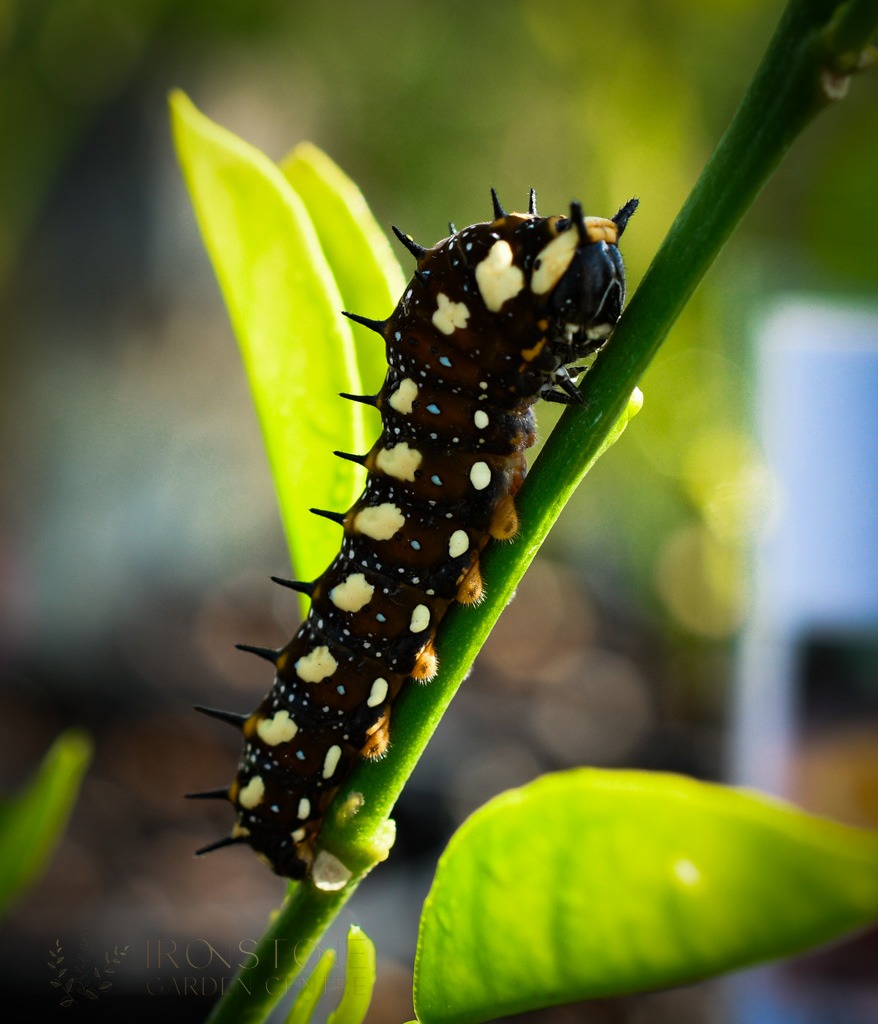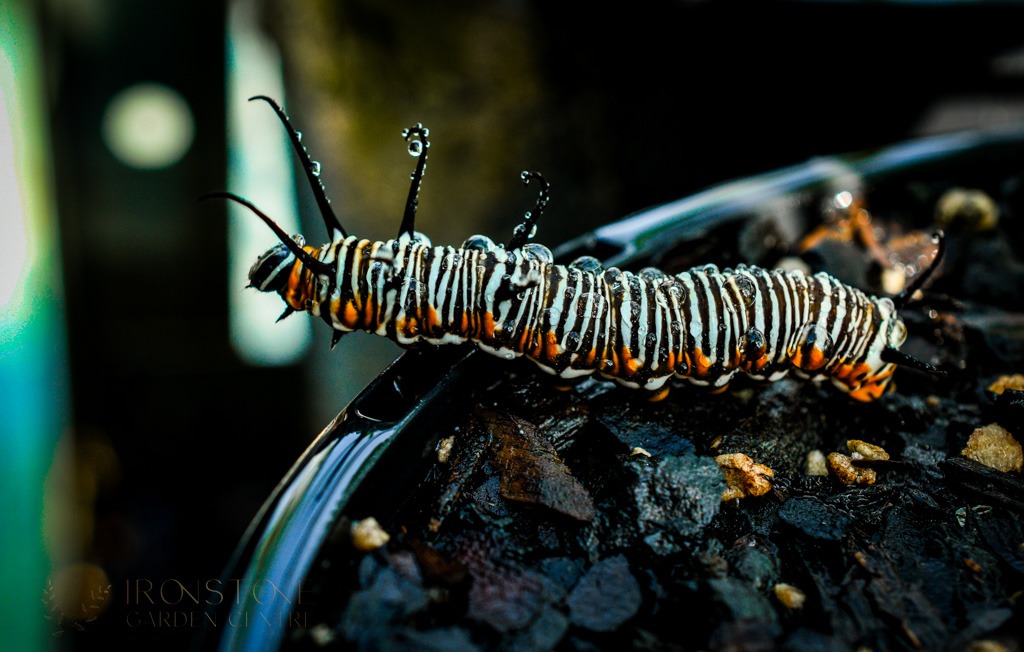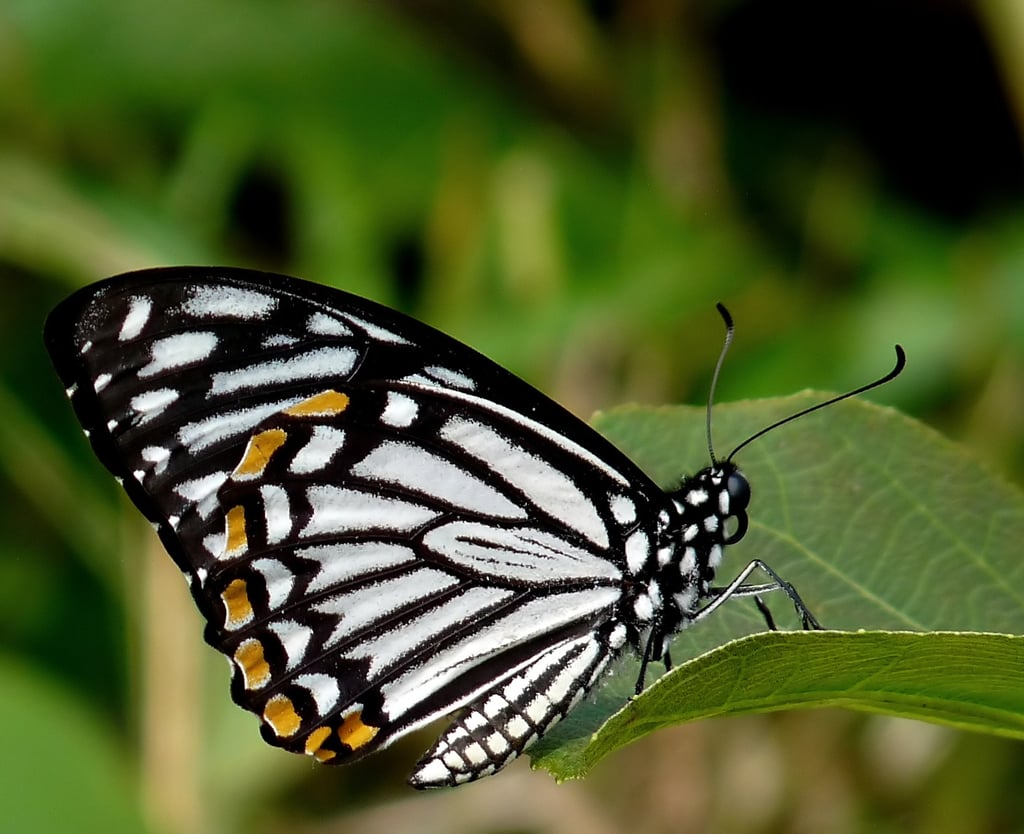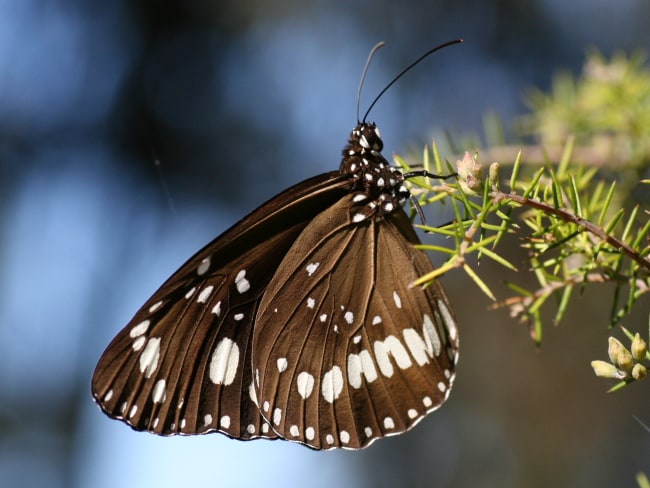Why Let the Caterpillars Feast?
by Alicia
5/27/2025


Today in the garden, we spotted two interesting caterpillars — one curled up on a young orange shoot, and another crawling along the edge of a potted oleander. At first glance, you might think they’re pests. But actually, they’re the baby forms of two amazing butterflies: the Common Mime Swallowtail and the Monarch (Wanderer).


Butterflies don’t just look nice — they help pollinate lots of flowers in our gardens. That includes both the pretty ones we enjoy and some edible plants we grow. So, having butterflies around is good news!
🌿 The Citrus Caterpillar
The spiky caterpillar on our orange tree is a Common Mime Swallowtail (Papilio clytia). It’s been munching on the young leaves — and yes, it can be a bit hungry! But it only feeds like this for a couple of weeks before it turns into a chrysalis.
After that, you’ll see a lovely black and white butterfly fluttering around. These swallowtails visit Central West QLD at certain times of year, and our citrus trees are part of their natural life cycle.


🌼 The Oleander Visitor
The other caterpillar was a Monarch, with its classic black, white, and yellow stripes. Monarchs usually lay their eggs on milkweed plants, but this one was found near an oleander pot, which is related but not the right food.
Monarch caterpillars need milkweed to build up their natural protection from predators. Since oleander isn’t the right plant for that, we gently moved this one to a pot of Balloon Cotton Bush (Gomphocarpus physocarpus), which Monarchs love.


When caterpillars munch on leaves, it might look like they’re damaging your plants — and to some degree, they are. But plants are pretty good at handling this kind of leaf loss.
Leaves are where plants make their food using sunlight, but the roots below ground store energy and help the plant recover. When caterpillars eat leaves, the plant can slow down a bit while it regrows foliage, but the roots keep the plant healthy and working.
Once the caterpillars finish feeding and move on to pupate, the plant will often grow new leaves quickly — especially in warm weather. So even if your plant looks a bit ragged for a short time, it will usually bounce back fine.
💚 Why We Don’t Mind a Bit of Leaf Munching
It’s easy to worry about caterpillars chewing your plants, but honestly, it’s not usually a big problem because:
Caterpillars only eat leaves for about 10 to 14 days before becoming butterflies.
Most plants bounce back quickly, especially in warm weather.
Butterflies pollinate lots of flowers — both the colourful ones and plants that produce fruits and veggies.
Having butterflies means more birds and other wildlife visiting your garden, which keeps things balanced and lively.
So, a few nibbled leaves is a small price to pay for all the good things butterflies do.
If you spot a spiky or stripey caterpillar munching on leaves, take a closer look. You might be watching a future butterfly in the making — and helping out your garden’s natural life.
Subscribe to our newsletter
We gratefully acknowledge the Koa people as the traditional custodians of the land on which Ironstone Garden Centre operates. For generations, the Koa people have cared for and nurtured this land, enriching it with their knowledge, culture, and deep connection to Country. We honour their ongoing stewardship and the enduring legacy they have created. As guests on Koa Country, we humbly pay our respects and commit to listening, learning, and working with the Koa community.
